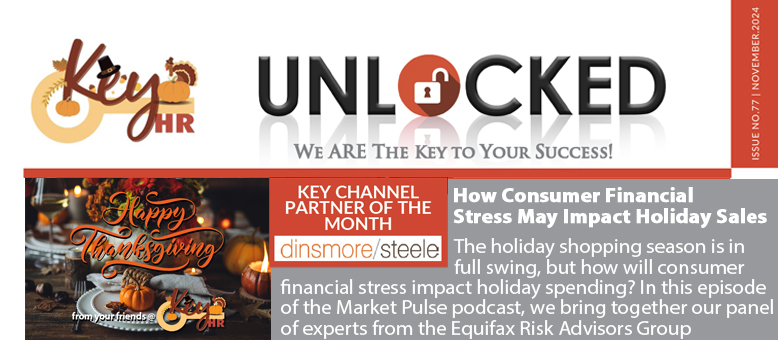
KEY HR UNLOCKED Newsletter – ISSUE NO. 77 | NOVEMBER . 2024

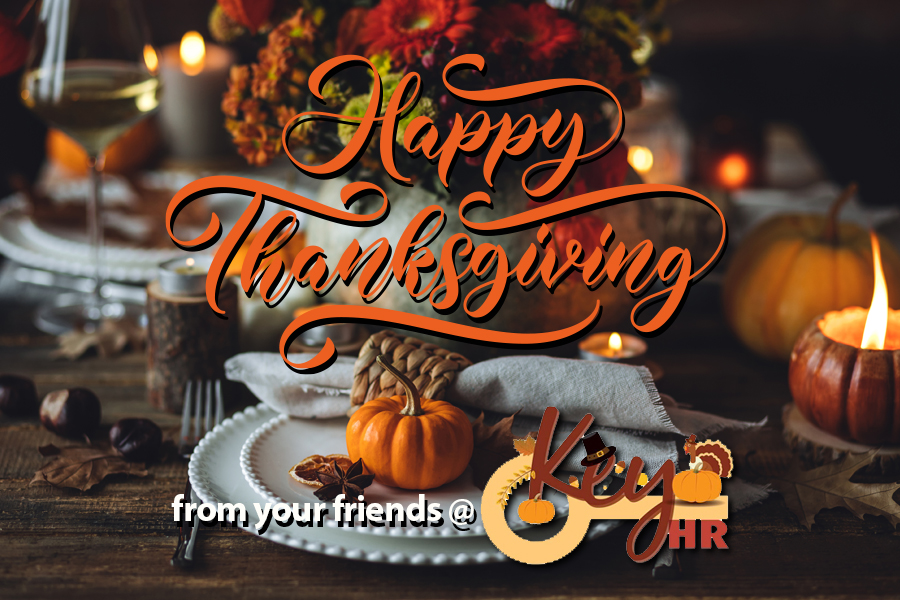
How successful could you be if you could focus on what you do best? It’s a question worth asking. And we not only HAVE the answer… We ARE the Key!
KeyHR is aligned with preferred provider companies to offer new and innovative ways to meet out clients’ payroll, employee leasing, benefits and insurance needs.
Our relationship with these companies helps business owners reduce costs, save time, optimize their workforce, increase revenue and minimize risk. If your company needs to save money, address compliance issues, improve efficiencies and increase productivity, we have the solutions.
If your company needs to save money, address compliance issues, improve efficiencies and increase productivity, we have the solutions and the key to your success.
Trust Key HR to provide you with…
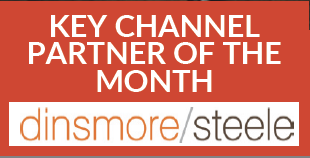
- Access to more service providers than any other business of our kind
- Specialists in every area of Human Resources
- Solutions for companies at all stages of development – from startups to fully mature
- A firm commitment to stay current on the laws that affect your industry and business
- Savings from 20 to 40 percent off your bottom line
- It could be one of the smartest business decisions you ever make!

In the September 2024 Market Pulse webinar, our panelists had a lively discussion about several end-of-year topics, including how student loans are affecting consumer behavior and the latest news from the Fed. AC Cutts & Associates President and Chief Economist Amy Crews Cutts covered a dynamic macroeconomic update around the latest Fed rate cut — and what it signals. Later, she was joined by Equifax Risk Advisors, Jesse Hardin, David Sojka, Maria Urtubey, and Tom O’Neill, for a discussion in response to your questions about even more year-end topics. Separately, we broke down consumer credit trends.
How Consumer Financial Stress May Impact Holiday Sales
The holiday shopping season is in full swing, but how will consumer financial stress impact holiday spending? In this episode of the Market Pulse podcast, we bring together our panel of experts from the Equifax Risk Advisors Group, including Dave Sojka, Jesse Hardin, Tom O’Neill, and Thomas Aliff to dive into the relationship between economic factors and holiday sales.
Consumer Stress Persists for Some Consumers
There are several economic uncertainties impacting the consumer shopping experience, said Jesse Hardin. While headline inflation numbers may be falling, the impact on consumer habits and spending behaviors is more nuanced. Factors such as rising prices, job market health, and workforce reductions contribute to the complex
landscape often referred to as the K-shaped economy. “The headline inflation numbers continue to fall. Obviously, that’s good,” Harding said. “But really when you question what the benefit is to the consumer, does a 3.7% inflation headline versus 3.2% really change a consumer’s habits or perceptions or spending behaviors?” Hardin attributed a slowdown in spending in the final months of this year to the increased cost of living. But impact varies by age group, with the 30-to-39-year-olds and 40-to-49-year-olds expressing higher levels of worry, he said.
Understanding Consumer Segments is Key
Tom O’Neill underscored the importance of understanding consumer segments based on age, income, family size, and other characteristics. He pointed out the
diverse impact of economic trends on different populations, emphasizing the need for retailers to tailor their strategies accordingly. “We hear from a lot of major retailers that they’re taking consumer stress into account. A lot of them are focusing on value shopping and acknowledging that times are tight for consumers in their marketing and pricing strategies,” O’Neill said. One trend the financial industry can count on is the increased use of revolving debt. “As we’re going into this holiday season, the one thing that does seem certain is that credit usage is going to continue to increase,” he said.
Consider the International Perspective
Inflation is impacting consumers across different global regions, with interest rates and credit demand responding accordingly. Thomas Aliff emphasized the need to consider these international trends when assessing the economic landscape. “A lot of the same trends that we’re observing in the U.S. do happen elsewhere, but they’re happening at different rates,” he said.
Financial Options for Consumers
There has been a shift in consumer behavior, with a decrease in the use of traditional credit options and an increase in interest in Buy Now, Pay Later (BNPL) services. Dave Sojka said BNPL has evolved from a discretionary spending tool to a vital budget management resource, especially for those experiencing economic challenges. “As an alternative or an augmentation to traditional credit cards or private label cards when holiday shopping, BNPL is here to stay,” he said.
Conclusion
Economic stress may force shoppers to reprioritize spending this year in the US, cutting back on discretionary spending, and shifting from higher ticket items and luxury purchases to more essential-focused and experiential spends.
Federal student loans will be in the mix and for some households that means being more strategic in credit usage and looking for promotions, discounts, and budget-friendly options.
If you have questions or suggestions for future podcasts, feel free to reach out to us at riskadvisors@equifax.com. From all of us at the Market Pulse podcast, happy holidays!
equifax.com
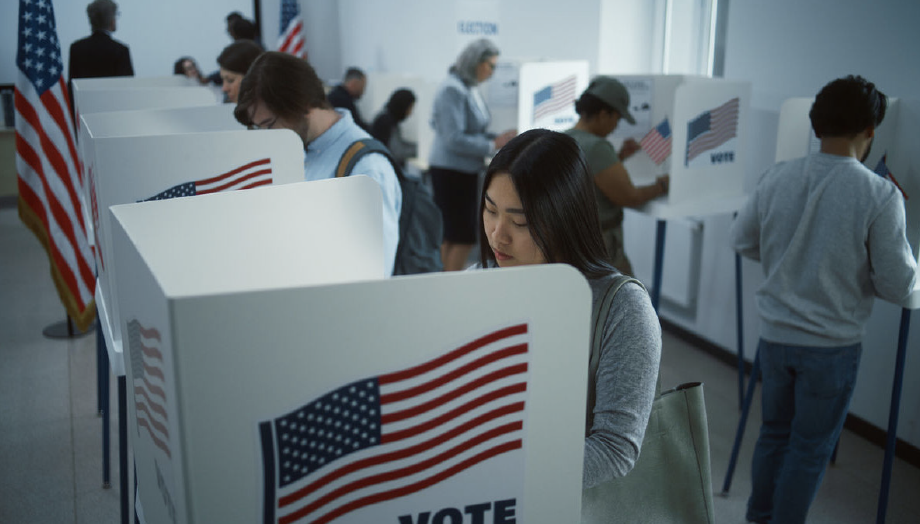
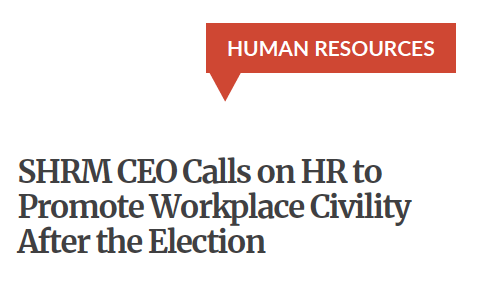
Civility in the workplace is always vital—but in the aftermath of the presidential election, it’s more important than ever, SHRM President and Chief Executive Officer Johnny C. Taylor, Jr., SHRM-SCP, told HR leaders in his opening remarks at SHRM INCLUSION 2024 outside Denver on Nov. 5—Election Day. Taylor called for civility in the workplace in the aftermath of the election—and for HR leaders to guide and nurture such efforts.
“We’re going to need [civility] more than ever,” especially on Nov. 6 and after, he said, citing the closeness of the presidential race and the contentiousness around it. “You’ve got to cascade the message back to your colleagues. This is going to be HR’s opportunity to make a difference in America. The entire world is watching.”
The U.S. workforce contains roughly 168 million people—about half the country’s population—so roughly 50% of Americans will be at work the day after the election, Taylor explained. “It’s razor, razor slim. We’ve never had this close of a race, and what that presents to us is the risk that the next day, half of the people you interact with will hate you,” he said. Too often, Taylor added, people view those who differ with them politically as enemies and hold them in contempt.
That’s unacceptable, he said, and it serves as proof that embracing civil conversations—and accepting that those around us hold differing opinions and values—is the only viable alternative. “The entire world is watching what happens [on Election Day], and more importantly, what happens tomorrow and in the days following this election—especially in the workplace,” Taylor said. “We cannot continue to be as divided as we are. This is not good for our country. It’s not good for our children. It’s not good for us. We can do better; we must do better.”
Taylor’s remarks come on the heels of the SHRM Q3 Civility Index, released Oct. 28, which found that political tensions and disagreements are playing out in the workplace and in everyday life—and increasing incivility. Differing political viewpoints and opinions on topics related to social issues were the top contributors to incivility: In fact, 27% more workers cited political viewpoint differences as a contributing factor to incivility at work in Q3 than in Q2. Not only does incivility result in contentious and unhappy workplaces, according to the Q3 Civility Index, but U.S. organizations collectively lose approximately $2.17 billion per day in reduced productivity and absenteeism due to incivility.
Taylor touted SHRM’s efforts on encouraging civility and recognizing the impact it can make in the workplace, including SHRM’s new Political Conversations Playbook, which highlights techniques to get through these conversations together as a workforce, and its 1 Million Civil Conversations campaign. Engaging in open and civil dialogue, SHRM leaders attest, can bridge divides and build understanding— not only to create stronger workplaces, but to promote the betterment of society. SHRM has now surpassed 1 million civil conversations, Taylor said. But that doesn’t mean the work is done. In some ways, it’s just beginning.
Taylor also cited civility’s role in inclusion and diversity (I&D) efforts in the workplace, saying that acting civilly and being open to people with differing opinions fosters a sense of belonging. That’s also why SHRM is committed to leading with inclusion in its approach to I&D.
“Diversity is beautiful; it’s our country’s strength. But we missed the inclusion side of the equation,” he said. “And it’s not just inclusion for some people or people who are historically underrepresented or mistreated. It’s inclusion for all. That’s the only way this thing works.”
www.shrm.org
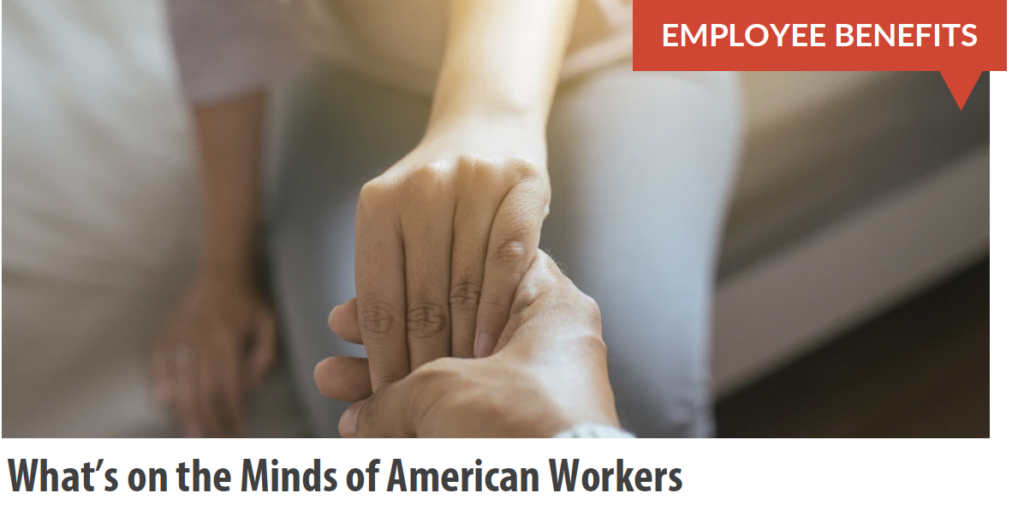
Many Americans are struggling right now.
Almost 30% of U.S. workers reported feeling a lack of interest, motivation or energy within the 30 days prior to taking the 2024 Work in America Survey: Psychological Safety in the Changing Workplace. The research was conducted online from March 25 to April 3 by Harris Poll for the American Psychological Association (APA) and included the responses from more than 2,000 U.S. working adults. A quarter said they had trouble focusing, and the same percentage noted that they had experienced emotional exhaustion within the last month. Twenty-three percent of respondents said they didn’t feel motivated to do their best and the same percentage said they had a desire to keep to themselves. Others reported feelings of loneliness and being ineffective at work.
All of that paints a fairly bleak picture. However, employers have a role to play in bolstering morale among their staff members through open communication, and by ensuring workers are aware of benefits that can help.
What’s going on What American workers are feeling right now is actually more nuanced than a significant portion of them feeling down. In addition to reporting a host of negative feelings, 90% of workers said they were at least somewhat, if not very, satisfied overall with their jobs. And, 81% would recommend their place of employment to others, according to the APA research. But what’s driving this contrast? Essentially people are stressed about factors that they can’t necessarily fix by getting a different job, says Dennis Stolle, senior director of the Office of Applied Psychology at the APA.
Prices are estimated to have grown 3.2% in 2024, according to the Federal Reserve Bank of Minneapolis. This comes on top of inflation being more than 4% in 2023, 8% in 2022 and almost 5% in 2021.
Workers are also concerned about having stable employment. Recent data from research firm MarketWatch Guides showed that 70% of employees were preparing to potentially lose their job after the hundreds of thousands of layoffs that have been announced this year. This included saving for a potential layoff and browsing job postings. Besides economic anxiety, there has also been a rise of conflicts within the workplace as employees adjust to being around each other in person after working remotely during the pandemic, says Dani Kimlinger, CEO of MINES and Associates, an international business psychology firm. She notes that her firm tracks the reasons why clients seek out its services, and there has been a jump in disagreements within the office as a driving factor.
The need for conflict resolution can involve either staff members not getting along or a supervisor and an employee having issues, she adds. Gossip and bullying were also two significant catalysts for negative workplace experiences. The transition of returning to work from a home office has frustrated workers in another way. About a third of workers surveyed by the APA said they were not working in their preferred location, whether it was in an office, remotely or hybrid. There is often an assumption that most workers would prefer to be remote, but the breakdown is actually more evenly distributed than that. In office, remote and hybrid are each the top preference for roughly a third of workers, the research found. Employees who aren’t working in their preferred location “are feeling disconnected in where they are required to work and are having a worse experience,” Stolle adds.
Finally, the increased utilization of artificial intelligence is causing stress for employees, with almost half of workers between the ages of 18 and 25 worrying that this technology will make all or some of their job duties obsolete. This figure was 45% for staff members 26 to 43 years old. Stolle categorizes this as another stressor related to work, but not enough to make someone dislike their job overall or want to leave.
benefitnews.com
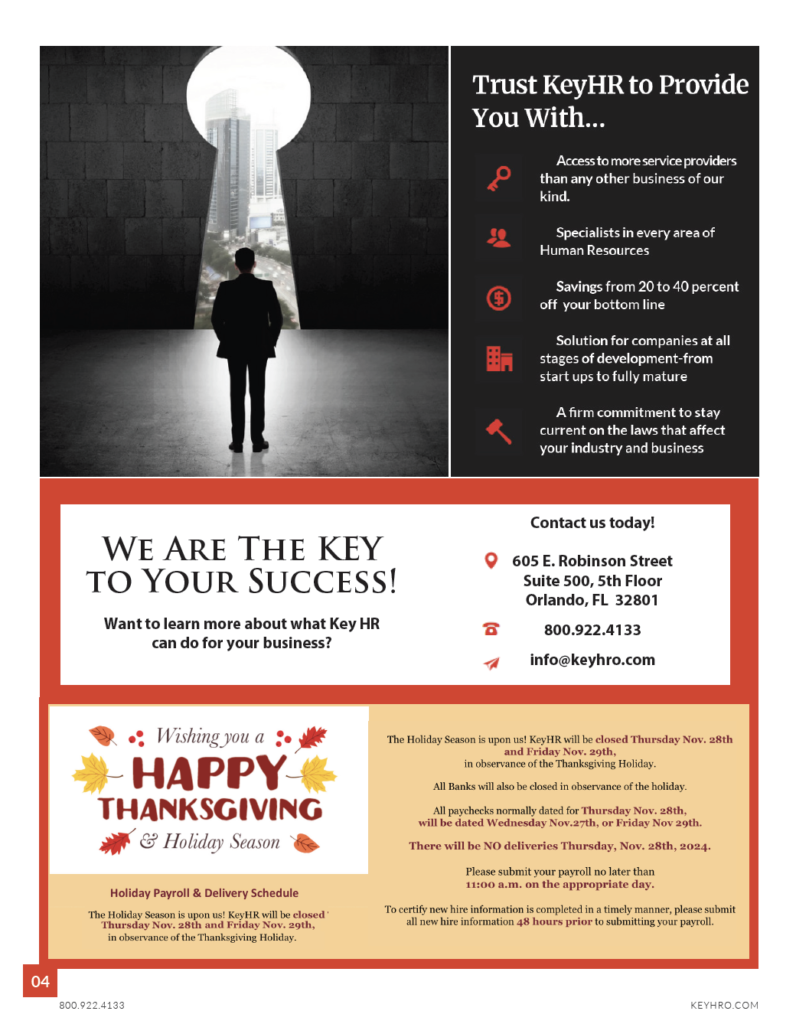
Click To download the Key HR Newsletter UNCLOCKED
_________________________________
This communication is for informational purposes only; it is not legal, tax or
accounting advice; and is not an offer to sell, buy or procure insurance.
This post may contain hyperlinks to websites operated by parties other than KeyHR. Such hyperlinks
are provided for reference only. KeyHR does not control such websites and is not responsible for their content.
Inclusion of such hyperlinks on KeyHRO.com does not necessarily imply any endorsement of the material
on such websites or association with their operators
- Posted by admin
- On November 21, 2024
- 0 Comment




